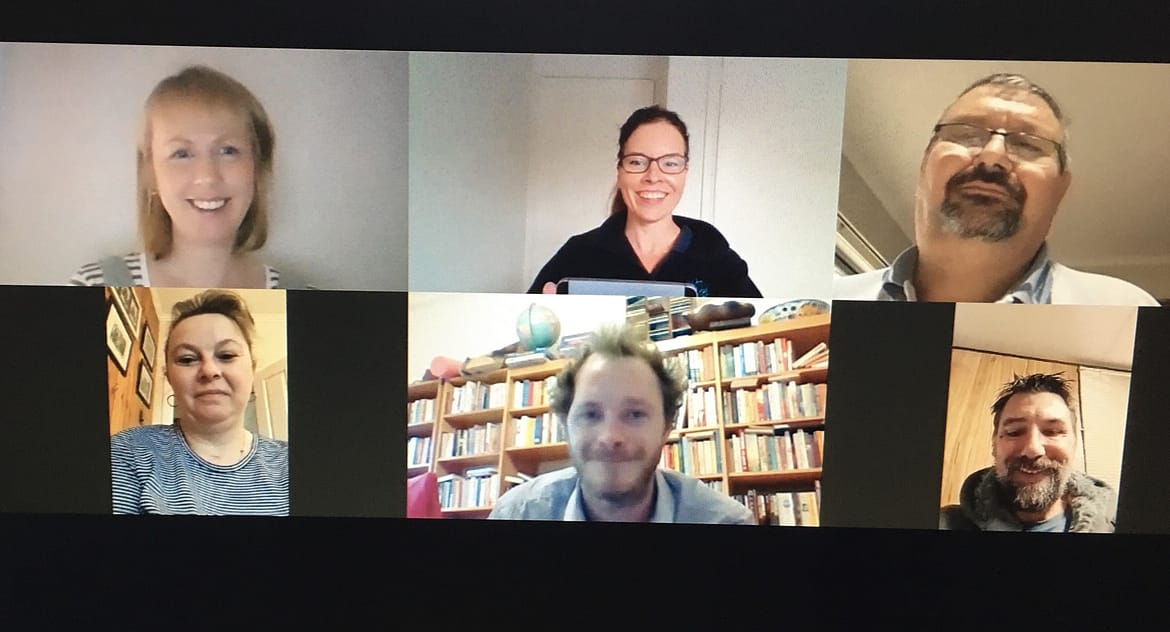by Emma Downey, physiotherapist deputy team leader at Independent Rehabilitation Services.
At the end of 2019, Independent Rehabilitation Services set out to develop a telehealth service, but little did they realise how essential this mode of service delivery would become. The COVID-19 pandemic and resulting lockdown restrictions had a significant effect on physiotherapists guiding people to remain physically active.
For those who required support or a particular environment to safely and effectively exercise in, the barriers grew significantly, especially for people with disabilities.
For some, it was the loss of their only opportunity during the week to stretch their limbs out of the confines of their wheelchair.
For others, loss of physical activity programs such as gym, pool or group activities had detrimental effects on their general wellbeing and management of challenging behaviours and contributed to their social isolation experienced during the year.
A key question emerged—how will we provide effective, goal-orientated physiotherapy during lockdown to our clients with complex disabilities?
The Disability Royal Commission report (2020) highlighted that during the pandemic, people with disabilities experienced restricted access to healthcare and regular support persons who are trained in supporting safe mobility, exercise and community access.
Independent Rehabilitation Services became highly cognisant of these challenges for people with disabilities as the pandemic began to unfold. We are a community-based private practice consisting of physiotherapists, occupational therapists and speech therapists based in Melbourne.
We specialise in the management of adult neurological rehabilitation and complex disabilities for those living in the community, and we travel to clients’ homes, gyms, workplaces or communities to help them achieve their functional goals.
As lockdown progressed, physiotherapists at Independent Rehabilitation Services largely shifted to a telehealth (TH) mode of service delivery.
By March 2020, we witnessed closure of community gyms, pools and community groups. It became clear that providing face-to-face therapy would be significantly impacted.

TH emerged as an alternative in-service delivery but we were mindful that many of our clients’ cognitive and behavioural impairments would create barriers to online participation.
A key question emerged—how will we provide effective, goal-orientated physiotherapy during lockdown to our clients with complex disabilities?
A review of current physiotherapy evidence for TH found the majority of studies were performed on the orthopaedic and musculoskeletal population, with limited evidence to support the application of TH in neurological and disability populations.
The studies were mostly comparing TH intervention to normal mode of physiotherapy, not the absence of face-to-face physiotherapy, which was becoming our reality.
Our staff participated in a rapid TH upskilling process; training and support was tailored to encompass the diversity and complexity of our client population.
We took an individualised client approach and developed a step-by-step process for clinicians to apply to clients with complex disabilities.
We were guided by the government’s COVID-19 directives on providing therapy services, client consent and set-up, including access to the internet and a device. Individual client factors considered were divided into cognition and visuospatial ability, mobility, sensory systems, upper limb and lower limb function and, most importantly, the presence of a support person.
To ensure staff were prepared to commence TH, we performed a series of online staff training sessions targeting IT skills, the clinical-reasoning process for TH appropriateness and strategies during a TH session with people with disabilities.
Strategies covered the use of a support person for set-up and to assist during movement, IT troubleshooting issues, monitoring for signs of fatigue or change in behaviour, maintaining eye contact with the client (by sticking a dot next to the camera as a reminder to look at it and not the screen), shortening session times or taking frequent breaks, and the use of audio-visuals to maintain engagement.
For clients who were not appropriate to participate in video calls, we explored the option of regular phone contact for coaching and monitoring purposes.
Further support to staff included the use of TH champions who provided clinical mentoring sessions, an online staff forum for peer support, sharing TH wins and accessing IT support, as well as a TH wellbeing guide for managing ‘TH fatigue’.
Independent Rehabilitation Services has a comprehensive risk assessment process to ensure the safety of staff and clients; this was expanded for TH services.
Simple strategies were developed; for example, prompting a client to put their trainers on at the start of the session to reduce their falls risk, and spending the client’s first TH session reviewing their environment to assess for tripping hazards and safe locations to perform exercises.
Clinicians asked themselves these questions when developing a TH session: If I were present, what level of support would I be providing? Am I safely able to replicate this level of support online?
A staff survey was conducted to determine confidence in performing aspects of physiotherapy via TH; this indicated that clinicians had the lowest confidence in physiotherapy assessment and management of incidents.
In response, we developed resources on assessment alongside online interactive training sessions.
Role play videos were developed to expose clinicians to scenarios such as a client fall, a medical event, and deterioration of mental health during a session. A post-training survey found an increase in confidence in these two domains.
During implementation, a number of barriers for delivering a TH service arose.
These included the timing of various funding bodies to approve TH item numbers, a client’s ability to access the internet and devices, consent (concerns around privacy and effectiveness of treatment), reduced digital literacy and no access to a support person.
The NDIS-approved purchase of electronic devices to facilitate TH, which a number of clients utilised, helped mitigate these, and several of our clients developed digital literacy goals around the use of TH, which enabled interdisciplinary goal- orientated therapy and access to other supports.
Collaboration with the clients’ occupational therapists and speech pathologists helped solve cognitive and communication barriers to accessing TH.
Physiotherapists found the biggest challenges to be developing safe and effective treatment programs via TH, particularly for those with a low level of physical function and those without access to support persons.
While clients preferred seeing their clinician face to face, over 90 per cent of survey respondents were satisfied with the TH service provided, and 84 per cent were likely or highly likely to use TH in the future if face-to-face therapy was unavailable.
Goals were often tailored to lockdown life and therapists were called on to use their creativity and think outside the box.
Where possible, providing a mixture of face-to-face and TH sessions worked most effectively, which is in line with the current evidence (APA 2020).
So, what did the clients think of their TH sessions? After the second lockdown, a client focus group ran and online surveys were sent out to those who participated in TH.
Overall feedback highlighted an appreciation for the ability to engage in some form of physiotherapy during lockdown.
While clients preferred seeing their clinician face to face, over 90 per cent of survey respondents were satisfied with the TH service provided, and 84 per cent were likely or highly likely to use TH in the future if face-to-face therapy was unavailable.
Despite the year’s challenges, there were many positives, the biggest being able to deliver goal-orientated therapy and remain connected to many of our clients, whether via video or phone consultations.
In addition to online rehabilitation programs, successful joint equipment trials with occupational therapists and equipment providers occurred, leading to successful equipment provision.
Many physiotherapists noted their skills in education and communication improved during this time. Our staff clinical mentoring program continued with mentors dialling into TH treatment sessions, alongside family and team meetings transitioning to TH.
Our clients and clinicians are now enjoying reconnecting in person and we foresee a number of long-term benefits to providing some ongoing TH.
Continuing to offer family and team meetings and clinical mentoring sessions online saves in travel time and improves ease of coordination.
Reduced travel costs help maximise therapy for clients with low amounts of funding or living rurally.
For instances where a client’s personal or living situation presents too high a risk for home visits, TH offers a safe alternative for clinicians.
Despite seeing our clients less and feeling restricted in therapy provision, physiotherapists played a crucial role supporting vulnerable clients by keeping connected during a period of social isolation, monitoring for signs of deterioration, and facilitating ongoing rehabilitation and physical activity as best we could.
It was an incredibly challenging year and as a practice we are really proud of what our clinicians and clients achieved via TH.
Emma Downey, APAM, is a physiotherapist currently working in Melbourne. She divides her time between two roles: physiotherapy deputy team leader at Independent Rehabilitation Services and physiotherapist at Alfred Health Community Rehabilitation Program.
This article first appeared in physiotherapy inmotion February 1, 2021.

